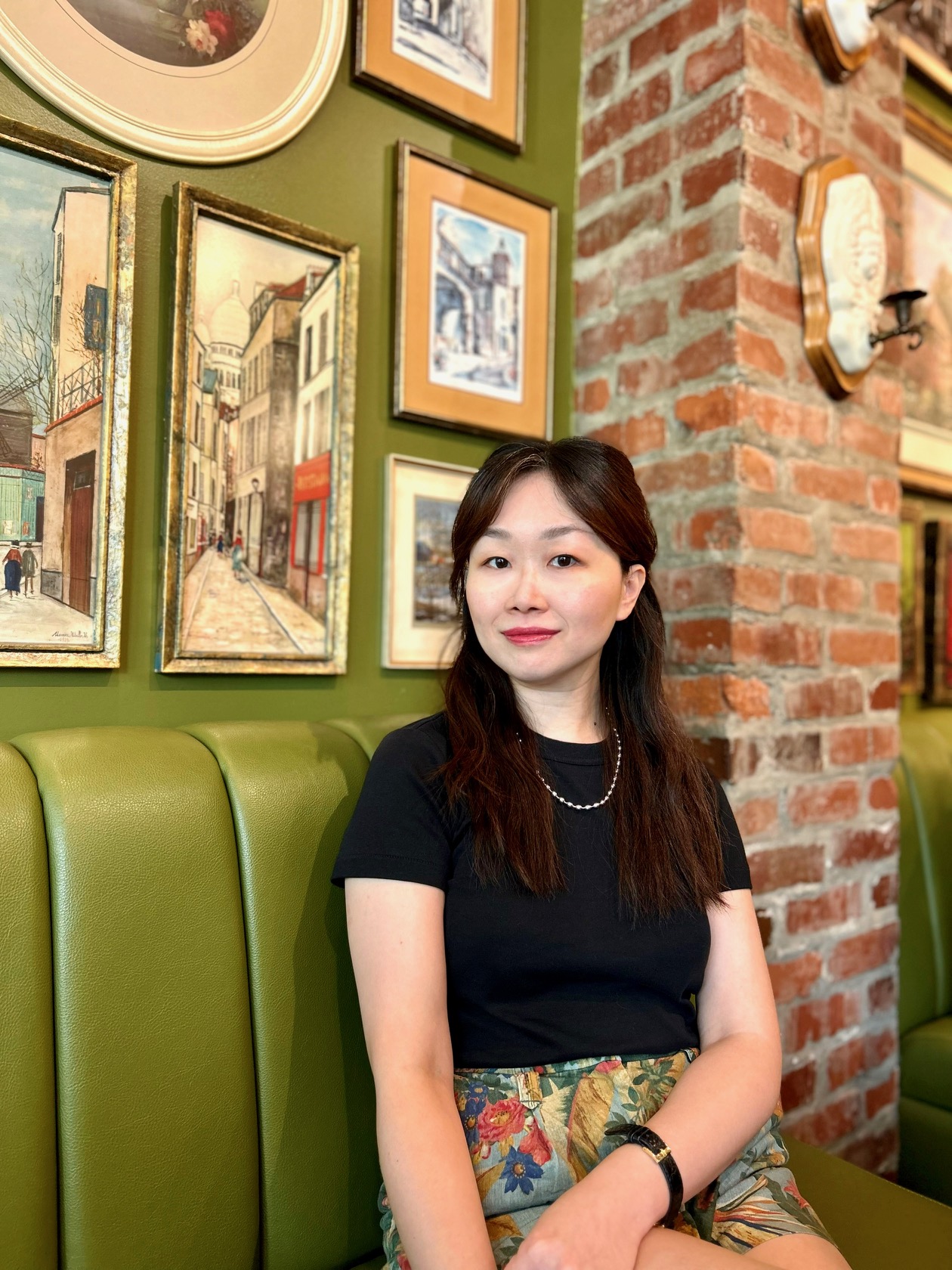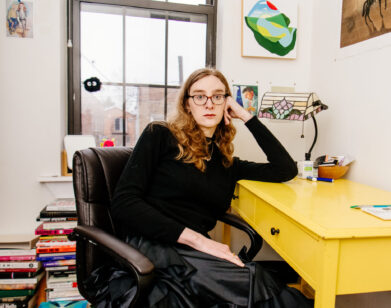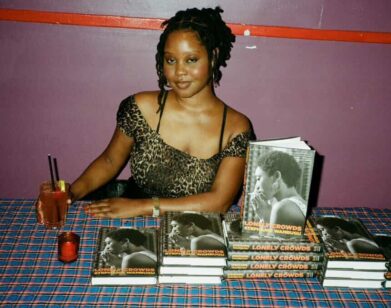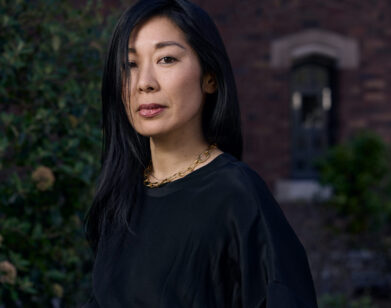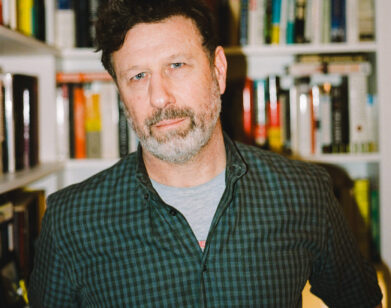LIT
Christine Lai on Archives, Ruins, and Her Debut Novel Landscapes
I spend a lot of time thinking about diaries. A compulsive diary keeper myself, I instantly understand the impulse to keep one when I encounter it in a novel. In Jhumpa Lahiri’s foreword to Alba de Céspedes’s Forbidden Notebook, she writes: “All diaries and notebooks, whether intended for publication or not, whether invented by their authors or not, whether framed as (or within) novels or not, are all dialogues with the self. They are instances of self-doubling and self-fashioning.” When we read a fictitious diary, we are reading not just the words of a narrator, but the way that they envision themselves, complicated by the way they hope to be seen. Archives serve a similar purpose.
When I spoke to the author Christine Lai, she mentioned Forbidden Notebook and a few other novels animated by the urge to record. Considered alongside these other books, Lai’s debut novel Landscapes, published in the U.S. this week, is special in that the narrator, Penelope, is not just a diarist, but an archivist too Set in the near future, Penelope is tasked with archiving an art and ephemera collection in what remains of a crumbling estate and finds herself increasingly drawn to a past that cannot be muffled. The story of an archive—discovered in not only what it preserves, but what it leaves out—is compelling, and Landscapes has a lot to say about art, ruins, and beauty. Fittingly, Lai spoke to me last month about missed connections, the joys of collecting, and her enduring fascination with country houses.
———
AMANDA INMAN: How are you?
CHRISTINE LAI: Good, thanks. How are you?
INMAN: Good. Where in the world are you?
LAI: I am in Vancouver. What about you?
INMAN: I am in Nyack, New York. Yeah, just a little bit north of the city. When I was thinking of how I wanted to start our conversation, I thought we could take the lead from your novel and begin with ruins. The first image we get is Turner deciding to paint the ruins as they were, rather than the renovated and restored estate. Why did you want to start with this image?
LAI: Well, I’ve always been fascinated with ruins. I’m really drawn to ancient ruins when I’ve gone to Rome and Greece, and also because I studied romantic literature, and the romantics were obsessed with ruination. So it’s just something I’ve always been thinking about. I know a lot of people tend to associate ruins with a sense of despair, or think of a ruin in a city as kind of dystopian, but I actually associate ruins with the idea of rebuilding. The flowers and the weeds that grow through the ruins, they’re symbols of hope. I just think ruination is kind of the flip side of construction, so I like to think of that juxtaposition as well.
INMAN: I agree. I work with rare and antiquarian books, and spend a lot of time thinking about restoration, so this book was made for me. How did you decide to include these archival descriptions?
LAI: Early on, I wanted Penelope to be an archivist and to be working with archived items. I didn’t include the actual items until later on in the writing process. I thought of the book as a kind of a box, so I started collecting these objects, and I wanted the descriptions because I love the materiality of old books. They tend to be very expensive, but I love just handling them, or going to a bookstore to look at them, and I actually love learning the terminology that booksellers use, like “foxed” or “ slightly foxed. So I wanted, in some ways, for the materiality of the books or the objects to parallel what has happened to the world outside and also to Penelope herself.
INMAN: Well, it’s like another form of ruination. And it just keeps echoing around the reader in all shapes and forms, so it’s like you’re in this ruination soup, which I loved. It reminds me of Daisy Hildyard, when she was reviewing Sarah Baume’s Seven Steeples.
LAI: Oh, I’ve been meaning to read that.
INMAN: She wrote this amazing review in the New York Review of Books, and I’m just going to read this to you.
LAI: Yeah, please.
INMAN: “Anybody who’s ever read a book on how to write fiction knows that a bath mat belongs in a story only if it indicates some telling detail about the protagonist or if it’s to be used as a murder weapon. This approach to narrative is not universal, but it is familiar. We might observe that it is an ethos of annihilation. It eradicates the intrinsic value of everything beyond the main characters, so it’s a nice fit for a species bent on the destruction of everything outside ourselves.”
LAI: Oh, that’s brilliant.
INMAN: Yeah, it’s absolutely brilliant. And I was just thinking of how you included these descriptions of items in the estate. Traditionally, people might be like, “Oh, cut it.” But it’s part of the world building. It’s not necessarily moving the plot forward, but it feels essential, you know?
LAI: I’m so glad you think so. They were very essential, especially after I added them. All the different objects are related to her memories as well, so they do kind of propel the book forward in some ways, even though they don’t.
INMAN: Let’s talk about Mornington Hall, the setting and the landscape of where a lot of the novel takes place.
LAI: I guess the inspiration for the country house was novels like Ishiguro‘s The Remains of the Day. I’ve always loved country house novels, but I wanted a ruinous country house, first because of my fascination with ruins, but also because I came across these photographs by a Belgium-based photographer called Mirna Pavlovic, and she just goes to all of these abandoned mansions and castles throughout Europe and photographs them. They’re absolutely sublime, and there’s this kind of melancholy beauty to them. I was also really drawn to the works of W.G. Sebald. I feel like I’m constantly returning to his work. He has all these dilapidated houses and talks about how the building of these houses necessitated destruction, so I did some research about the history of the country houses and how often they require the removal of entire villages. So it all looks very beautiful, genteel and civilized, but actually there is this history of destruction and brutality linked to colonial history. But I actually found that just the most fascinating part about country houses, this kind of double-sidedness, the beauty on the one hand and the history of destruction.
INMAN: Speaking of dark history that doesn’t take away beauty, should we talk about Julian? I wanted to strangle him.
LAI: He was challenging to write, because he’s a character who’s very opaque to himself and has this drive to erase things about himself and about his past. So it’s hard for me to portray that in a way that still kind of outlines the character for the reader. I wanted to kind of juxtapose his perspective with Penelope’s, and the different sections are meant to be written in a slightly different style. Hers is in this kind of open-ended and capacious tone, and with his, the sentences are shorter and there aren’t as many metaphors or use of figurative language. In this case, the readers know early on what exactly is in Julian’s past, so it’s really a matter of seeing whether or not he ever comes to terms with that. I also wanted to have a character who approaches art in a very different way than Penelope. For him, it’s not really about comprehension. It’s about possession. It’s about hanging that piece of work on a wall and claiming that it’s his, and so there’s always this distance between him and artworks, despite his longing to get closer to them. So he fails to do so. And what did you think of the sections?
INMAN: I’m really glad you said the way that they approach art is so different, because that was one of my big takeaways. I felt like Julian was this empty, hungry void that was just trying to bring as many things as he possibly could into himself. We also get Penelope’s diaries, which I really want to talk about. Do you keep a diary?
LAI: Not a diary, I keep a notebook. What about you?
INMAN: I love a diary. I didn’t start keeping one religiously until a couple of years ago, but it’s a really nice way to orient myself.
LAI: It’s therapeutic.
INMAN: It’s so therapeutic. And Penelope says that, too. She compares keeping a diary to Louise Bourgeois’ sculpting as a form of alchemy.
LAI: I love books that are written in the diary form, or they’re epistolary in some ways. There’s a kind of open-endedness and an unfinished quality to them that I really appreciate. And I love this idea of the diary as a way of writing your way out of despair. I love The Forbidden Notebook, and how it actually subverts the idea of a notebook as a place of salvation. I loved The Wall by Marlon Haushofer. And Jacqueline Harpman’s I Who Have Never Known Men was also in the form of a diary, and that’s very dystopian but it’s kind of like The Wall in that it’s about community and loneliness. So I was just really, really drawn to that and other kinds of diary novels, like Kate Zambreno’s Drifts, which I loved. And Kafka’s diaries, which are referenced throughout the book. I mean, it’s obviously not a “Kafkaesque” book, though I would love to write a Kafkaesque book one day, but I was really drawn to the image of him writing his diaries late at night when the rest of his family has gone to sleep. It’s like his haven, the one place where he’d go to be himself and to indulge the ideas he was obsessed with.
INMAN: Have you ever been a collector?
LAI: Yes, I love collecting things. I collect books I love. I’m trying to start a collection of Calvino’s Invisible Cities, but in different languages, which is quite hard, because I think you have to travel for something like that. I collect vintage postcards, so the postcards that are referenced in the book are from my own collection. I love reading the messages. And they’ll have ones like, “Oh, I’ve just left the dock, and I will be in New York in however many days.” So it’s really fascinating the way that people used to use postcards. It’s like the tweets or text messages of the late 19th to early 20th century.
INMAN: I mean, imagine all the missed connections. Things get lost in the mail all the time. Like, “Hey, I’m on my way. Meet me at the dock,” and then sideways stamp, and they never show up and your life is changed drastically.
LAI: That’s a great idea for a story. Do you collect anything?
INMAN: I have a couple old postcards. I have a few first editions of these horrible, horrible books about British people going down to south Florida and being like, “This is a wild place.” I would like to think of myself as being a collector, but also space is limited, and time is limited.
LAI: My dream was also to have a secondhand bookstore.
INMAN: There’s one in Nyack called Pickwick, and he doesn’t really have it organized at all, and everything is in vertical stacks. If you want a book that’s at the bottom, it’s kind of like just, “Sorry.” Though I love the place, I don’t want to have that type of bookshop.
LAI: A bit more organized.
INMAN: I have a bajillion more questions. For people that read this book, I urge everyone to check out the notes section, because it’s like one of the greatest reading recommendations list I’ve ever seen.
LAI: I’m glad. Me and the publisher, we were debating whether or not to include notes, because the Canadian edition doesn’t have notes. People really kind of differ in terms of their opinions or their approach to this. I personally like notes when I read, because you can tell when you read a novel if there’s a lot of research. I often want to know where the research comes from. Not to verify facts, but just so I can do further readings if I want to. But I don’t think that’s very common. I think Catherine Lacey’s Biography of X is one of the few I’ve read recently that does have that.
INMAN: Oh, I loved it. And this is your debut, right?
LAI: It is.
INMAN: How do you feel about that?
LAI: I’m really excited. It is a bit daunting. You’re a brilliant writer as well, so you know what it feels like to have work out there. It just feels like it doesn’t really belong to you anymore, because people are going to read it however they’re going to read it. And I’ve found that kind of difficult, just psychologically letting go of this thing that I’ve always thought was mine and mine alone.
INMAN: That’s a hard thing to wrap your head around.
LAI: Yeah. I mean, it’s still nice to see the object in stores and to hear about other people’s experiences of reading it, but I’m always a bit apprehensive. I don’t know if I want to know what other people think, especially friends and family. I find that really odd. I actually didn’t tell a lot of people that I was writing a book until I had signed a contract. They’re just like, “You’ve been writing a novel?” I don’t know what people were expecting. Maybe they were expecting a love story, or a mystery, or somebody dies, something that’s very plot-driven. So I think the initial reaction from some of my friends has been surprise, and that’s been kind of difficult to explain to them.
INMAN: Have there been reactions that you found surprising, like people read it differently than you had intended?
LAI: Yeah, absolutely. People reading it in a complete autobiographical way surprises me. Well, maybe it doesn’t surprise me, because that’s very common nowadays. But, yeah, people who definitely read it and assumed that I’m Penelope, so that’s kind of been a bit strange. I knew that there were some readers who were not going to like the archive items, because they disrupt the flow of the narrative. So I’ve always known that. But it’s been a really wonderful process. I have great publishers, great editors, who I’m lucky to have found. A couple of years ago, I was looking up online how to self-publish and feeling really overwhelmed. I don’t know anything about marketing or publicity, and I admire people who are able to do it, but I know that I would not be able to do all of that on my own.
INMAN: People are always like, “Oh, I’ll just self-publish,” thinking that it’ll be easier. And it’s like, no, that’s a full-time job.
LAI: It really is. And for literary fiction, it doesn’t seem like it’s all that possible.
INMAN: Well, I’m excited to see what happens with this book. I honestly think that so many people are going to love it.
LAI: Oh, thank you so much. I hope so. And I hope I get to meet more writers and readers. I think that’s been the most rewarding part, chatting with people like you about books.

